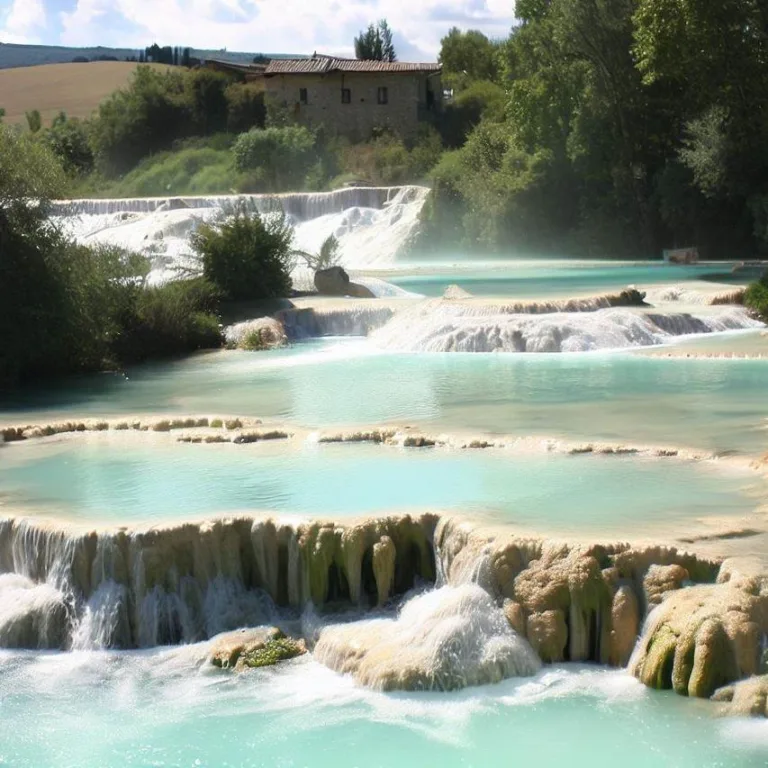Welcome to our comprehensive guide on Saturnia, the captivating planet that has intrigued astronomers and space enthusiasts for centuries. In this article, we will delve into the remarkable features, intriguing mysteries, and scientific significance of Saturnia, shedding light on its awe-inspiring beauty and unique characteristics.
The splendor of saturnia’s rings
Saturnia is renowned for its stunning and iconic ring system, which sets it apart from all other planets in our solar system. The rings are composed of countless icy particles, ranging in size from tiny grains to larger boulders. These particles orbit around Saturnia in a flat plane, creating a mesmerizing visual spectacle that has captured the imagination of countless generations.
The origin of Saturnia’s rings is still a topic of scientific exploration. Some theories suggest that the rings are remnants of a moon or moon-sized object that was shattered by a collision. Others propose that the rings are composed of material that never fully coalesced to form a moon. Regardless of their origin, the rings continue to be a subject of fascination and study.
The enigmatic hexagon
One of the most puzzling features of Saturnia is its hexagonal-shaped jet stream located at its north pole. This astonishing atmospheric phenomenon, known as the Saturnia Hexagon, is a six-sided pattern of winds that encircle the pole at incredibly high speeds.
Scientists are still working to unravel the mysteries behind the Saturnia Hexagon. The exact mechanisms that create and maintain this hexagonal pattern remain unclear, and researchers are actively studying the planet’s unique atmosphere and fluid dynamics to gain a deeper understanding of this enigmatic phenomenon.
A world of moons
Saturnia is not only adorned with its magnificent rings, but it also boasts an impressive retinue of moons. With over 80 confirmed moons, Saturnia hosts a diverse array of natural satellites, each with its own distinct characteristics and features.
Among Saturnia’s moons, Titan stands out as one of the most intriguing. This moon is larger than the planet Mercury and is the only moon in our solar system known to have a thick atmosphere. Titan’s atmosphere contains methane, and its surface features include lakes and rivers of liquid methane and ethane, making it a fascinating object of study for scientists interested in planetary habitability and prebiotic chemistry.
The grand finale mission
In recent years, NASA’s Cassini spacecraft embarked on a mission to uncover the secrets of Saturnia and its rings. The Cassini mission provided unprecedented insights into the planet’s composition, atmosphere, and magnetosphere. One of the most remarkable phases of the mission was the „Grand Finale,“ during which Cassini orbited between the planet and its rings, capturing close-up images and data before intentionally plunging into Saturnia’s atmosphere to avoid contaminating its moons.
Frequently Asked Questions
Q: What is Saturnia’s composition?
A: Saturnia is primarily composed of hydrogen and helium, with trace amounts of other elements and compounds. Its low density allows it to float on water if a large enough body of water were available.
Q: Can Saturnia support life?
A: Saturnia’s extreme atmospheric conditions and lack of a solid surface make it an inhospitable environment for life as we know it. However, its moon Titan remains a subject of astrobiological interest.
Q: How were Saturnia’s rings formed?
A: The exact origin of Saturnia’s rings is still debated among scientists. They are believed to be the result of a collision between moons or the accumulation of material that never formed a moon.
Q: What is the significance of the Cassini mission?
A: The Cassini mission provided unprecedented insights into Saturnia’s features, rings, and moons. It greatly expanded our understanding of the planet’s complex systems and enriched our knowledge of planetary science.
Q: How can I observe Saturnia from Earth?
A: Saturnia is visible to the naked eye from Earth and can be observed through telescopes. Its rings and largest moons are easily visible and make for a breathtaking astronomical sight.
With its captivating rings, mysterious hexagon, diverse moons, and groundbreaking space missions, Saturnia continues to captivate our curiosity and push the boundaries of our understanding of the cosmos.
Viz také:






